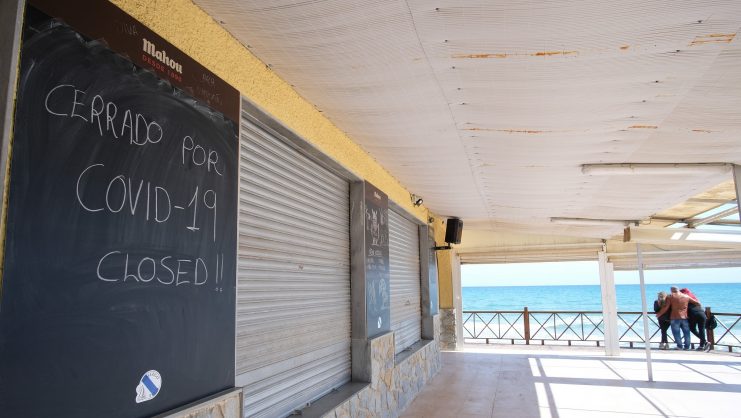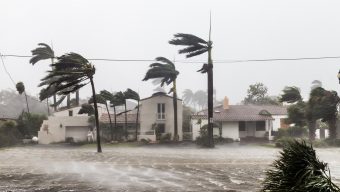The world is engaged in a dangerous experiment. It is playing with fire. In the 2008 financial crisis, central banks abandoned traditional monetary policy manuals and became the real protagonists of stabilization policies, guaranteeing infinite liquidity at historically low rates and embracing a monetary expansion so spectacular and so sustained that it can no longer be considered unconventional. Just when it seemed the situation was returning to normal and the balance sheets of central banks were beginning to contract, along came the pandemic and with it, new monetary expansion. This time, however, it also extended to the emerging economies and was accompanied by unprecedented fiscal expansion. All of this was endorsed by the markets and backed by the traditional watchdogs. According to International Monetary Fund figures, national public deficits increased on average by more than ten percent in 2020 and public debt rose by some 30 points of GDP.
Rock-bottom interest rates and soaring public deficits are now the norm across the world and are heralded as the right policy response to such extraordinary social circumstances. In emerging countries, these expansionary policies have often ended in high inflation, external funding issues, and a balance of payment crises, dollarization, financial bubbles, banking crises, and long recessions. This was the story of the 1980s and the root cause of the lost decade in Latin America: the inability to respond effectively to deteriorating trade conditions and the withdrawal of external funding in the wake of the oil crisis.
The message to governments is clear and simple: you need to solve the problems, so spend without restraint.
Now, however, everything seems to be different. It is as if the world – markets, academics, and politicians – had decided to shake off the curse which is implicit in the title of Reinhart and Rogoff’s timeless classic and have accepted the idea that in the new normal everything will be different, including economic policy. It is not the first time that this has happened; let us remember the glorious years of Alan Greenspan’s “Goldilocks economy.” The truth is that monetary policy today has changed, judging by the behavior of the Federal Reserve and the European Central Bank, and advocates a monetary “free lunch” justified by the assumption of secular stagnation and neutral zero or negative interest rates, and fiscal orthodoxy has followed suit.
The guardians of orthodoxy, symbolically depicted as the “men in black” from the IMF, are now urging governments to spend in order to alleviate the social and economic repercussions of COVID-19. They have even taken to berating countries like Mexico which, paradoxically, still considers that their traditional external vulnerability warrants a modicum of fiscal restraint. The reasoning is very simple and would seem to be failsafe: with such low interest rates, the costs of public debt are practically nil and it would be almost irresponsible not to take advantage of them to meet the huge social needs, infrastructure shortages, and health concerns. This recipe applies not only to developed countries, which traditionally have more room to maneuver from a fiscal standpoint, but also to emerging economies. Balanced budgets can wait and smart fiscal expansion, they say, can also ease the burden on central banks and make their monetary policy more effective.
The problem with this idyllic vision of the new normal is that the cost of getting it wrong is very high.
According to this new consensus put forward by Washington, DC and Cambridge, Massachusetts, the traditional problems of financing the public deficits of economies such as those in Latin America would be diluted in a horizon of zero or even negative interest rates for decades, and fears of resurgent inflation would dissipate in the face of the unstoppable force of globalization, digitalization, and the aging population. Low interest rates would, via push effects in advanced economies, make capital permanently available to the region, while increasing global competition would wipe out any wage demands not underpinned by productivity gains. The lesson is that aggregate demand policies can be pursued for a long time without causing inflation. The message to governments is clear and simple: you need to solve the problems, so spend without restraint. This is not anymore a populist slogan but the recommendation of the new economic mantra. Now that the new philosopher’s stone has been discovered, only irresponsible, ignorant, or evil governments would dare not to use it. The old ceilings on public deficit and debt are the vestiges of a bygone era, and fiscal modernity requires a greater degree of autonomy and discretion.
The problem with this idyllic vision of the new normal is that the cost of getting it wrong is very high. If, for some reason, inflation or financing difficulties were to return, Latin America would be left in a very vulnerable situation: substantially higher structural public spending, which would be recurrent and very difficult to reduce, and public debt levels approaching those of more developed countries – close to 80% of GDP according to IMF estimates for 2021 – the highest among emerging countries, coupled with debt markets that are less liquid and less credible. There is no guarantee that the interest rates currently prevailing in the region will be maintained forever. The structural forces driving disinflation are neither permanent nor irreversible. Similarly, their rate of change and their strength are not constant. We saw what happened during the height of the pandemic when international trade ground to a halt, supply chains broke down and protectionist sentiment took hold and is refusing to go away, because the geostrategic discourses of America and Europe first have struck a chord with broad swathes of their electorates.
Nor does it seem sensible to rely on risk premiums permanently numbed by massive and indefinite debt purchases by the Fed and the ECB, or by the complacency of markets anaesthetized by benevolent regulators who have concluded that the best possible policy is to defer the materialization of credit and counterparty risks until the pandemic has ended. The danger is not just to postpone payment issues and hope that the return to growth will simply turn them into a simple cash flow problem, but to believe that the risk has disappeared, that there is no danger of default, that current risk premium rates are sustainable indefinitely, and that investors have been converted to the new orthodoxy.
The danger is to believe that debt is not an issue because ultimately it can always be reabsorbed, restructured, defaulted on, or liquidated. Because we have seen that before. And the result this time is not likely to be very different: another lost decade. Latin America has been the region hardest hit by the coronavirus; regional output fell by 5% in 2020, increasing poverty, inequality and foreshadowing political tensions. Relying on magical, painless, almost miraculous solutions is very tempting. And even more so if they can hide behind an ad hoc adoption of the new doctrine which is in itself debatable for the advanced economies but which, if it is proved wrong, would be lethal for emerging economies. The region should not forget that its economic problems predate the pandemic and are rooted in its poor performance in terms of productivity, human capital, institutional development, and in its many pending structural reforms. Expecting that more monetary expansion, more deficit, and more debt will solve these problems is more than naïve, it is irresponsible. It is to jump without a parachute, and it is playing with fire.
The article was originally published in Spanish in America Economia.
© IE Insights.






